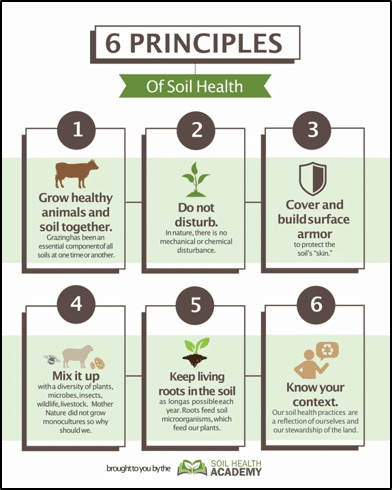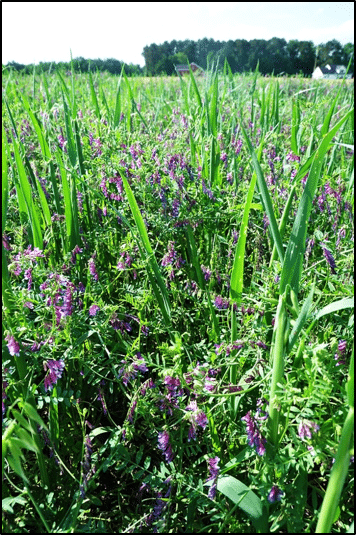By Allen R Williams, Ph.D., SHA Instructor & Co-Founder
Farming and food production have become hot-button issues today and can be a very confusing subject for consumers to sort out. Farming practices and food production have been linked to a number of things that consumers are concerned about including climate change, harmful runoff, animal welfare, food safety, drought and flooding, greenhouse gas emissions, agricultural chemicals, and many other concerns.
The fact is everything we do in farming and food can have unintended consequences. So, sometimes the thing that appears right actually creates a series of negative compounding and cascading effects that not only harm the climate, environment, and soil, but may also harm our health, quality of life, and longevity. Sadly, we often do not realize or recognize these harmful unintended consequences until it is too late, and until many have suffered.
I will discuss a handful of examples that have had significant consequences on the health of our planet, as well as our own.
Many consumers think about the potential harmful impacts of some methods of livestock farming for the production of meats and other proteins, such as milk and eggs (I will come back to this), but few ever realize that there are very serious issues surrounding production of our crops. For example, there are six basic principles of soil health that every farmer should be following, but few actually do. These six principles are:
- Integrate proper livestock impact through adaptive grazing.
- Minimize soil disturbance.
- Keep the soil covered at all times.
- Increase crop species diversity.
- Keep living roots in the soil as long as possible.
- Understand Your Context.

Integrate Proper Livestock Impact
The majority of crop farmers have deleted livestock and grazing from their farms. This is a rather recent phenomenon that has greatly accelerated the rate of topsoil loss, harmful runoff, loss of soil carbon and organic matter, increased reliance on chemical and synthetic fertilizer use, and created a host of negative unintended consequences. All land evolved with the contribution of both plants AND animals. Many of these animals were grazing and browsing animals, feeding on the plants that surrounded them. This interaction built the tremendous fertility and thriving ecosystems that once existed in our savannas, woodlands, grasslands and prairies—the very lands that attracted the farmers to begin with. Taking grazing and browsing animals out of the equation has created a series of significantly negative compounding and cascading effects.
Minimize Soil Disturbance
The majority of crop farmers (corn, soybeans, wheat, and even vegetables) have not converted to no-till operations or even minimal till operations. Instead, they use heavy cultivation that…
- Completely disrupts the soil and the soil biology on a routine basis
- Creates significant loss of soil carbon into the atmosphere
- Increases erosion and harmful runoff
- Heats up the soil and increases evaporative water loss
- Requires ever increasing reliance on agricultural chemicals such as herbicides, fungicides, and insecticides
- Requires heavy use of expensive machinery that consumes huge amounts of fossil fuels
The dirty little secret that many consumers are not aware of is certified organic farmers can be among the worst offenders in terms of constant cultivation and degradation of the soil. They are so limited in the tools they can use for weed control that many use excessive cultivation and create significant soil erosion, runoff, and damage soil biology.
Keep Soil Covered
Keep in mind that there are hundreds of millions of acres in agricultural production in the U.S. alone. Currently, less than 5 percent of all U.S. farms keep their soil covered at all times. This can easily be accomplished through the planting of cover crops after harvest of the monoculture cash crop, but few actually do this. The majority of cash crops grown in the U.S. actually have living roots in the soil for less than 120 days annually. That means for 240 days plus each year tens of millions of acres are sitting bare, not covered or protected by any plant material or residue. That is 67 percent of the year that soil if left unprotected. Exposure to sunlight and the subsequent heat buildup that harms soil microbes and soil insects, leads to significant evaporative loss of soil water, and creates opportunity for erosion and harmful runoff of nitrates, phosphates, and sediment (topsoil). Having measured soil temperatures all over North America for many years now, we have found that soil temperatures can reach 140 degrees F or greater when the soil is left bare.

Growing diverse cover crops between cash crops is a great way to feed soil microbes, protect the soil from heat and erosion and provide pollinator habitat for beneficial insects. (Photo by Ron Nichols.)
Increase Diversity
Most farmers routinely plant, on any given acre, a monoculture crop year after year after year. Nature abhors a monoculture and monocultures can never create or foster intact and fully functional ecosystems. If you travel to a truly wild place where nature has control, you will never see a monoculture of anything, whether plant, insect, bird, animal, or even soil microbes beneath the soil. Instead, you will experience an incredible abundance of life at every level. Monoculture cash crops should be followed with the planting of diverse cover crop mixes that address resource concerns and feed the next cash crop. There are now farmers who are successfully doing polycropping and permaculture.
Living Roots in the Soil
Because most farmers plant monoculture cash crops and do not plant cover crops after the harvest of the monoculture cash crops, they leave the soil bare and exposed for two-thirds of the year, or longer. For most of the year, they have no living roots in the ground actively photosynthesizing, sequestering carbon, and feeding soil microbes and pollinators. They are not protecting soil moisture and temperature. They are not protecting the soil against erosion and harmful runoff. This leads to significant loss of soil aggregate and causes the top few inches of soil to collapse, creating crusting and reducing water infiltration rates. This leads directly to even more harmful runoff and erosion.
Know Your Context
Knowing your context is extremely important in order to making real progress. What do we mean by “context”? You have heard the claim “all farms are not the same”. This is context. Soil type, crop rotation, topography, available markets, available equipment, labor, management practices and management style, farm infrastructure, other farm enterprises, owned or rented land, time of year, and willingness to adjust management will all influence decision making. Prior herbicide use can greatly restrict what we use for covers, particularly if we want to use them as forage or for grazing. Is the farm looking to move to no-till, add a livestock enterprise, bring the next generation into the operation, or expand the crop rotation? All of these factors affect our day-to-day decisions on the farm and will impact our decisions. We must make these decisions within the context of our individual farms.
These contextual decisions made by farmers have a profound impact on the consumer. If we as farmers make decisions that positively impact soil health, then we positively impact the health of the consumer. Likewise, the consumer must know their context as well and do their homework to select foods and farmers that are healthy for them and for the ecosystems surrounding them.
Farming by committee has not worked out very well. The committee being our crop consultants, local Coops, neighboring farmers, Extension Service, salespeople, and even family members.
Summary
As a fellow farmer I know that we can do a far better job of regenerating our soil resources, and we have a serious responsibility as the principle stewards of the land to do just that. I now know through my personal experience in implementing regenerative practices that we can make a huge difference in the issues that are of significant concern to both producers and consumers. The good news is, in growing regeneratively, we can also grow our profits and ensure the future of our family farming operations.
Stay Tuned…Part 2 Coming Soon!
